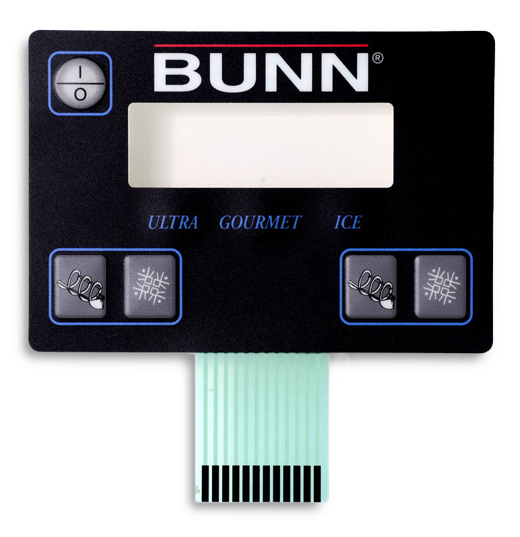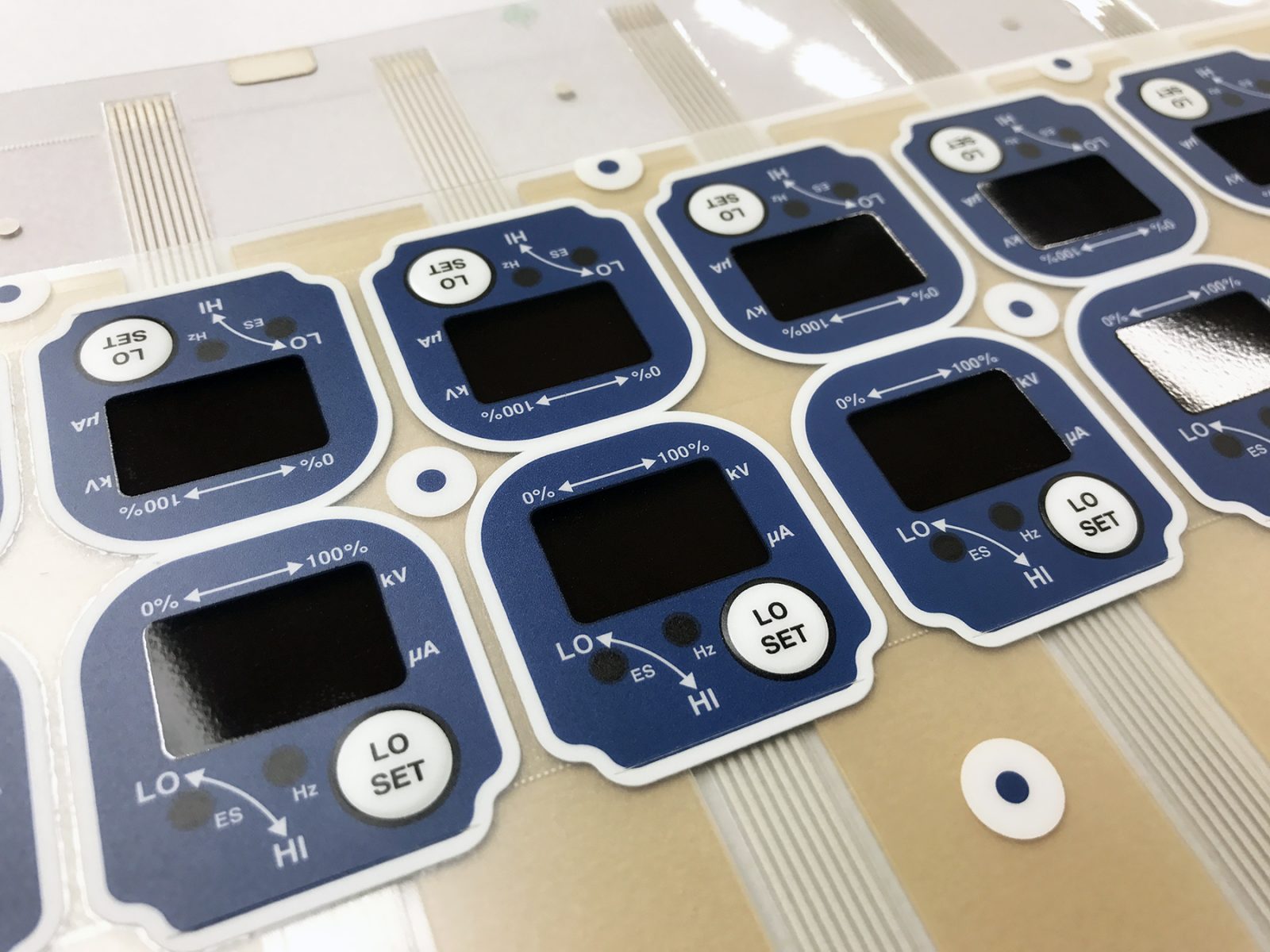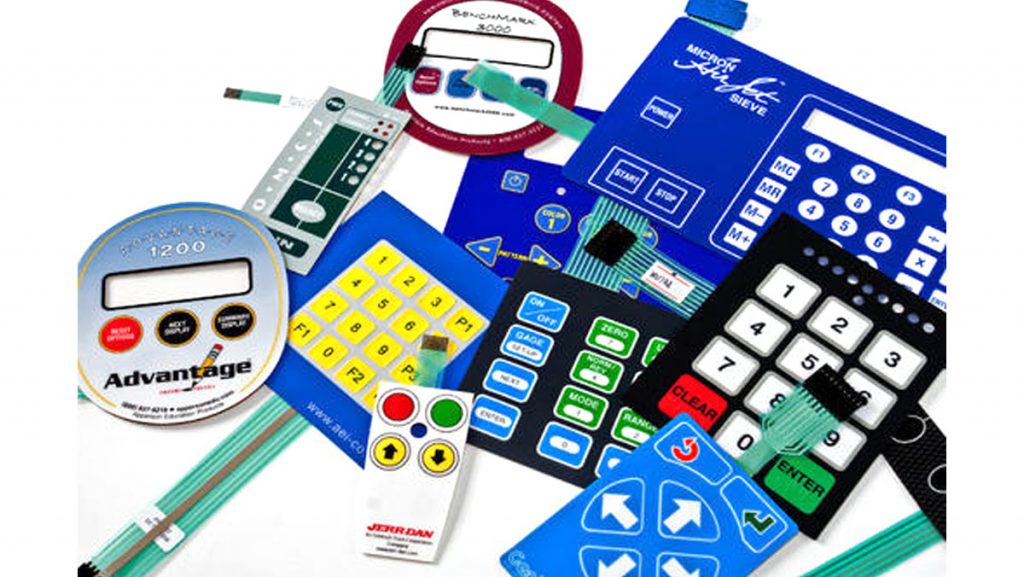Membrane Switches vs. Traditional Switches: What You Need to Know
Membrane Switches vs. Traditional Switches: What You Need to Know
Blog Article
Recognizing the Value of Membrane Switches in Individual User Interfaces
Membrane switches are important parts in the style of efficient individual interfaces, helping with not only performance yet additionally improving aesthetic appeal and user interaction. As we check out the future trends and various advantages linked with Membrane technology, it becomes clear that these switches are more than simply parts; they represent a merging of innovation and usefulness.
What Are Membrane Switches?

The spacer layer, which consists of sticky residential properties, permits the separation of the circuit layer from the overlay, making certain that the switch remains in a non-activated state till pushed. When stress is related to the overlay, it compresses the spacer layer, linking the void and completing the circuit in the underlying layer. This layout not only minimizes the physical room needed for standard mechanical switches but additionally boosts the toughness of the tool, as Membrane switches are generally immune to dirt, dampness, and various other environmental elements.
Typically located in applications ranging from customer electronic devices to medical devices, Membrane buttons are essential to contemporary innovation, giving a user-friendly and efficient interface that aligns with modern layout demands.
Advantages of Membrane Buttons
While countless switch modern technologies exist, Membrane Switches offer distinctive advantages that make them particularly desirable in various applications. One of the key advantages of Membrane buttons is their compact design, which permits space-saving applications in devices where realty is restricted. Their thin account not just enhances aesthetic charm however additionally promotes light-weight building.
One more significant advantage is their resistance to ecological variables. Membrane switches are typically sealed versus dampness, dust, and pollutants, making them suitable for usage in demanding atmospheres, such as clinical tools and industrial equipment. This toughness expands the lifespan of the switch, minimizing upkeep prices and boosting reliability.
Furthermore, Membrane buttons can be personalized to fulfill details design requirements, incorporating distinct graphics and colors that improve individual communication. Their responsive responses alternatives can additionally be customized to give a satisfying user experience. Additionally, Membrane buttons are cost-efficient, particularly in high-volume applications, as they can be generated successfully.
Applications in Various Industries

In the customer electronic devices industry, Membrane switches are prevalent in tools such as microwaves, washing machines, and remotes. Their tactile feedback and visual options boost individual experience while providing a smooth, modern appearance. Additionally, auto makers utilize Membrane buttons in dashboard controls and infomercial systems, where area is restricted, and individual engagement is essential.
Furthermore, the commercial industry leverages Membrane switches in control panels for equipment and equipment, permitting intuitive operation in usually severe settings. Their resistance to chemicals and moisture makes sure longevity and dependability in these applications. On the whole, the versatility of Membrane Switches contributes substantially to their widespread use, making them vital in various technological domain names.
Layout Considerations for Membrane Buttons

When designing Membrane switches, a number of crucial factors to consider must be thought about to guarantee ideal capability and customer experience. The choice of materials is crucial; selecting resilient, premium substrates can improve the switch's longevity and resistance to environmental factors such as moisture and temperature level variations.
Second of all, the style of the visuals overlay must focus on clarity and ease of usage. Symbols and text should be clear, and the layout should facilitate instinctive communication (membrane switches). Furthermore, tactile feedback is important; incorporating a responsive dome or various other systems can enhance the customer experience by supplying physical confirmation of activation
Another important variable is the switch's electrical efficiency. Designers must make certain that the conductive traces are appropriately developed to minimize resistance and stay clear of signal disturbance. This involves analyzing the needed linked here actuation force and making certain compatibility with the electronic parts they will certainly interface with.

Future Patterns in Membrane Technology
As modern technology remains to breakthrough, Membrane buttons are poised to progress significantly, driven by advancements in materials and producing strategies. One emerging pattern is the unification of sophisticated products, such as conductive inks and flexible my company substratums, which improve durability and decrease the total weight of Membrane switches. These materials not just boost the tactile action yet also enable the layout of buttons that can withstand harsher environmental problems.
In addition, the integration of touch-sensitive innovations is changing typical Membrane Switches into more interactive interface. Capacitive touch sensing units installed within Membrane switch panels can offer a much more receptive and instinctive user experience, aligning with the growing demand for smooth, contemporary styles in customer electronic devices.
In addition, innovations in printing techniques, such as digital and 3D printing, enable rapid prototyping and customization of Membrane switches. This flexibility allows producers to respond faster to market demands and consumer preferences.
Lastly, sustainability is becoming a significant emphasis, with suppliers discovering eco-friendly products my latest blog post and procedures. As these fads unravel, the future of Membrane technology promises enhanced capability, visual charm, and environmental responsibility, solidifying their duty in innovative interface across various industries.
Verdict
In final thought, Membrane Switches stand for a vital part in the design of individual interfaces, combining performance with aesthetic versatility. As advancements in innovation proceed, the evolution of Membrane buttons is anticipated to additional refine customer interfaces, driving innovation and enhancing use in a progressively intricate technical landscape.
Membrane buttons are indispensable elements in the layout of efficient customer interfaces, helping with not just capability but likewise enhancing aesthetic appeal and user interaction.Membrane Switches serve as an essential component in different individual interfaces, assisting in a smooth interaction between individuals and digital tools.While numerous switch innovations exist, Membrane Switches deal distinctive benefits that make them particularly desirable in various applications.Furthermore, Membrane switches can be personalized to fulfill details layout requirements, incorporating distinct graphics and colors that enhance individual interaction.In final thought, Membrane Switches represent an important component in the design of user interfaces, combining functionality with aesthetic flexibility.
Report this page